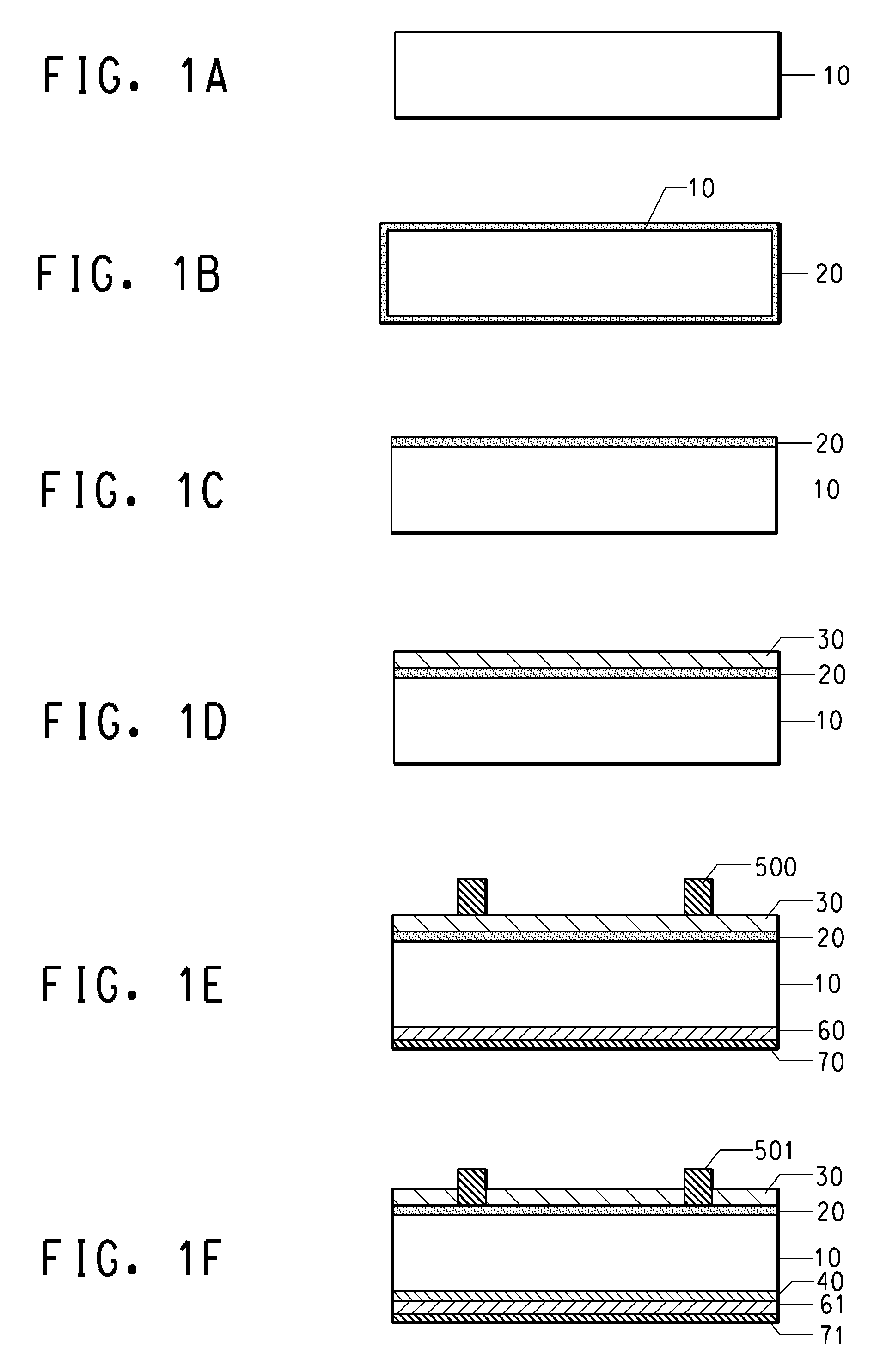Aluminum pastes and use thereof in the production of silicon solar cells
a technology of silicon solar cells and aluminum pastes, applied in the field of aluminum pastes, can solve the problems of reducing the solderability and adhesion of ribbons tabbed to said surface, and achieve the effect of reducing the solderability and adhesion
- Summary
- Abstract
- Description
- Claims
- Application Information
AI Technical Summary
Benefits of technology
Problems solved by technology
Method used
Image
Examples
examples
[0077]The examples cited here relate to thick-film metallization pastes fired onto conventional solar cells that have a silicon nitride anti-reflection coating and front side n-type contact thick film silver conductor.
[0078]The present invention can be applied to a broad range of semiconductor devices, although it is especially effective in light-receiving elements such as photodiodes and solar cells. The discussion below describes how a solar cell is formed utilizing the composition(s) of the present invention and how it is tested for its technological properties.
(1) Manufacture of Solar Cell
[0079]A solar cell was formed as follows:
[0080](i) On the back face of a Si substrate (200 μm thick multicrystalline silicon wafer of area 243 cm2, p-type (boron) bulk silicon, with an n-type diffused POCl3 emitter, surface texturized with acid, SiNx anti-reflective coating (ARC) on the wafer's emitter applied by CVD) having a 20 μm thick silver electrode on the front surface (PV145 Ag composit...
PUM
| Property | Measurement | Unit |
|---|---|---|
| wt. % | aaaaa | aaaaa |
| temperature | aaaaa | aaaaa |
| junction depth | aaaaa | aaaaa |
Abstract
Description
Claims
Application Information
 Login to View More
Login to View More - R&D
- Intellectual Property
- Life Sciences
- Materials
- Tech Scout
- Unparalleled Data Quality
- Higher Quality Content
- 60% Fewer Hallucinations
Browse by: Latest US Patents, China's latest patents, Technical Efficacy Thesaurus, Application Domain, Technology Topic, Popular Technical Reports.
© 2025 PatSnap. All rights reserved.Legal|Privacy policy|Modern Slavery Act Transparency Statement|Sitemap|About US| Contact US: help@patsnap.com



